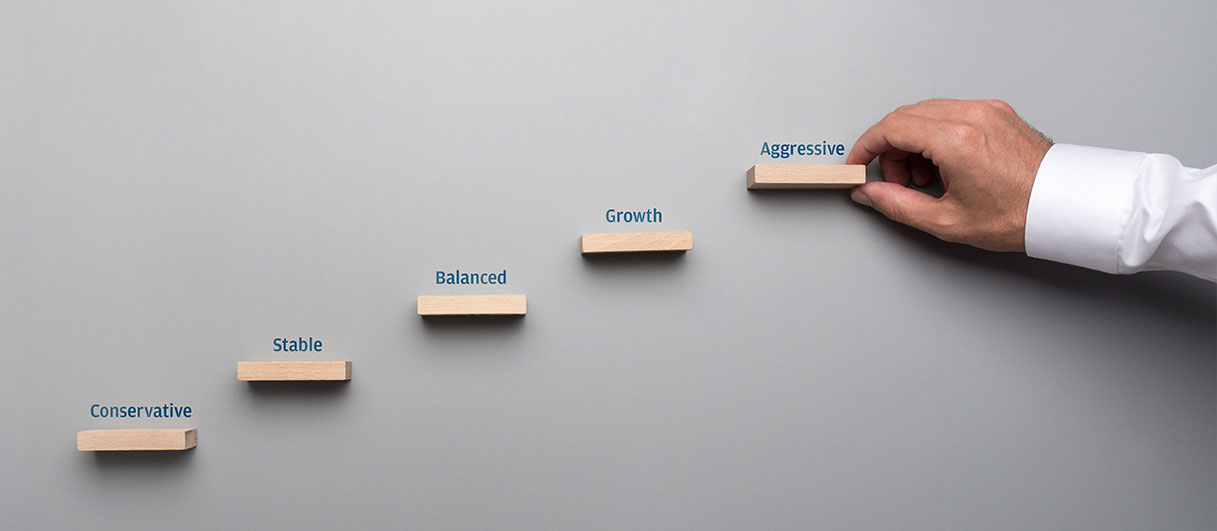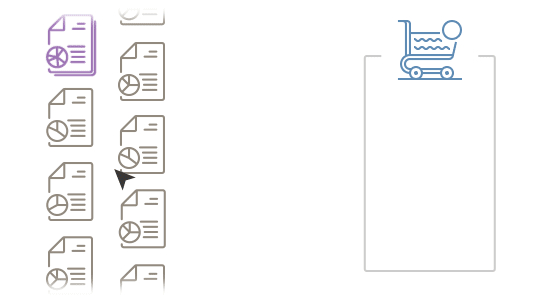
Understand your own Risk Rating
Knowing your risk tolerance level is key to determining how to structure your investments to meet your objective.
These enhancements are made in light of new regulatory requirements in Hong Kong, and are aimed to ensure that you are well informed about the nature, risks and features of the funds you are investing in, and that they are reasonably suitable for you, taking into consideration your financial situation, investment experience and investment objectives. These can act as introduction in helping you to select your investments.
What is my risk tolerance level?
By answering a few questions in our Financial Health Check Questionnaire, a representative risk tolerance level ('Client Risk Rating') can be determined in a few minutes.
In addition, please be reminded to regularly review the suitability of your investments, and to rebalance your portfolio as needed.
Conservative
You are very risk averse. Preservation of your capital is the most important factor when you consider your investment. You are likely to invest in investments that are intended to offer greater stability and security of capital despite that may achieve low investment returns, such as money market funds. You accept that, although your capital may be more secure, the relative value of your capital may be reduced by inflation. Investment products with risk rating 1 are likely to be suitable for you.
Stable
You have a cautious attitude to risk. While you are generally averse to capital loss, you are willing to take some -risk to increase your potential investment returns. The majority of your investment may be from the lower end of the risk spectrum, such as investment grade fixed income funds. A small portion of your investment may also be from the higher end of the risk spectrum, such as equity funds. You accept that the risk of loss of capital resulting from these investments is higher than in cash deposits or money market funds. Investment products with risk rating 2 or below are likely to be suitable for you.
Balanced
You have a moderate attitude to risk. You are willing to take additional risk to increase your potential investment returns. You accept that for the opportunity to achieve greater returns you may need to invest in a mix of assets across the risk spectrum. You accept the possibility that your investments may lose some of their value and that you may experience frequent fluctuations in the value of your investments. Investment products with risk rating 3 or below are likely to be suitable for you.
Growth
You have a higher attitude to risk. You are willing to take a greater amount of risk to increase your potential investment returns. You accept that for the opportunity to achieve greater returns the majority of your investments may be from the higher end of the risk spectrum, such as equity funds. You accept the possibility that your investments may lose much of their value and that you may experience frequent and large fluctuations in the value of your investments. Investment products with risk rating 4 or below are likely to be suitable for you.
Aggresive
You have an aggressive attitude to risk. You are willing to take on substantial risk to obtain the best possible potential investment returns. You accept that for the opportunity to achieve greater returns you may need to invest all of your investments in assets that are from the higher end of the risk spectrum, such as equity funds. You accept the possibility that your investments may lose all of their value and that you may experience more frequent and larger fluctuations in the value of your investments. Investment products with risk rating 5 or below are likely to be suitable for you.
What is fund risk rating?
A Fund Risk Rating between 1 and 5 is then assigned - 1 is the lowest risk rating and 5 is the highest risk rating. In general, a risk 1 fund is suitable for clients with “Conservative” Client Risk Rating or above, a risk 2 fund is suitable for clients with “Stable” Client Risk Rating or above, and so forth.
Qualitative factors (such as asset class and geographical coverage of the fund’s investments) and quantitative factors (such as 3-year annualized volatility of the fund) are taken into account to derive the Fund Risk Rating of a fund. For example, a fund investing primarily in equities in emerging markets will generally be considered to be of higher risk than a fund investing primarily in investment-grade fixed income products. A fund with historically lower volatility will considered to be of lower risk than a product with higher volatility.



What complex product means?
Complex Products refers to investment products whose terms, features and risks are not reasonably likely to be understood by a retail investor because of their complex structure. Various factors are considered to determine whether a fund is a complex product, such as whether the fund uses derivatives extensively for investment purposes, whether any features or terms of the fund could fundamentally alter the nature or risk of the investment, etc. Enhanced disclosure, warning statements and suitability checks are put in place for transactions involving complex products.

I would like to get more information about the Risk Rating.
Should you have any questions, please contact us via email investor.services@jpmorgan.com
If you would like to re-assess your risk acceptance levels regarding investment, please update your Financial Health Check Questionnaire in eTrading